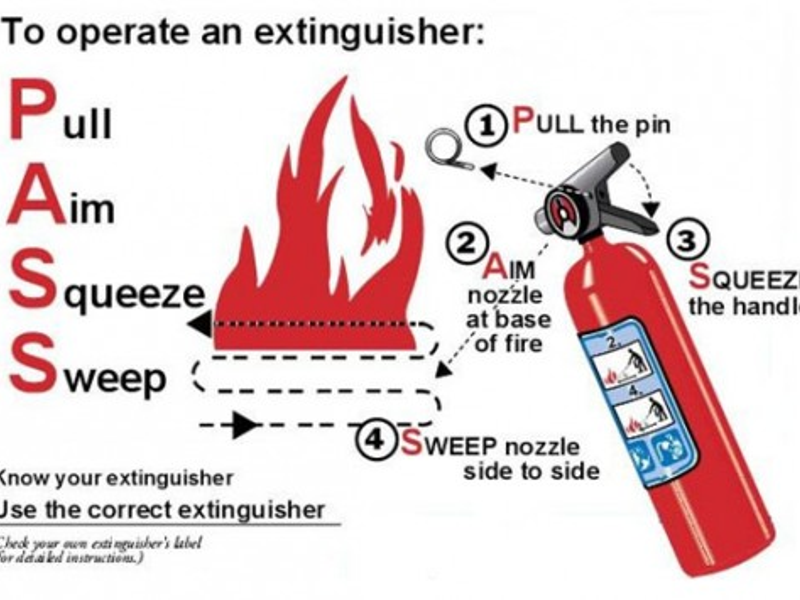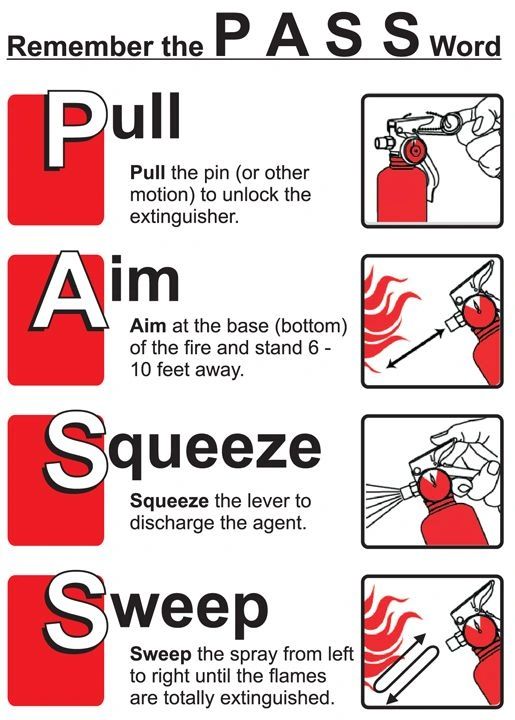Are you prepared to face a fire emergency? Knowing how to effectively use a fire extinguisher can be the difference between a minor incident and a major catastrophe.
The scenario of a fire emergency, often portrayed in movies, rarely reflects the reality of the situation. Most people haven't had hands-on experience with a fire extinguisher, leading to a lack of familiarity with the various types and their specific uses. It's a common misconception that all extinguishers are created equal, and that they can be used indiscriminately on any type of fire. This lack of awareness can be dangerous.
Before considering the use of a fire extinguisher, several safety measures must be taken. It's crucial to assess the size and nature of the fire. If the fire is too large or uncontrollable, the primary focus should be on personal safety. Evacuate the area immediately and call the fire department. Never jeopardize your well-being in an attempt to extinguish a large fire.
- Jamie Dornans Age Unveiling The Birthdate Of The Fifty Shades Star
- The Dynamic Duo Keira Knightley And Natalie Portman On The Big Screen
However, if the fire is manageable and small enough to be put out and contained, a fire extinguisher can be a valuable tool. Remember the acronym PASS (Pull, Aim, Squeeze, Sweep) it's the core of effective fire extinguisher use. This approach is suitable for most portable extinguishers, although always check the specific instructions for your particular model.
It's essential to use the right type of fire extinguisher for the specific class of fire. Never use an extinguisher on a fire type that it is not designed for. Extinguishers labeled for Class A fires (typically for ordinary combustibles like wood and paper) should not be used on electrical or grease fires. However, it's generally safe to use an extinguisher labeled for Class B and C fires (flammable liquids and electrical fires) on a Class A fire.
Being familiar with the acronym PASS and general fire safety principles before facing a fire can increase your chances of successfully putting it out. Before you consider using a fire extinguisher, you should ensure your personal safety is not compromised, there is a clear path for escape, the fire is contained and not spreading, the extinguisher is readily available, and you know how to use it properly.
- Unraveling The Life Of Teresa Terry A Journey Through Triumphs And Trials
- Unveiling The Stellar Hidden Figures Cast A Glimpse Into Hollywoods Unsung Heroes
Heres a handy table summarizing the key aspects of fire extinguisher usage, based on the PASS acronym:
| Step | Action | Explanation |
|---|---|---|
| P (Pull) | Pull the pin | Remove the safety pin from the handle to release the locking mechanism. This will allow you to activate the extinguisher. |
| A (Aim) | Aim at the base of the fire | Direct the nozzle or hose at the base of the flames, not at the flames themselves. Target the fuel source. |
| S (Squeeze) | Squeeze the handle | Squeeze or press the handle to release the extinguishing agent. |
| S (Sweep) | Sweep from side to side | Move the nozzle back and forth, covering the entire fire area until the fire is completely extinguished. |
Remember, this process can be easily forgotten in the face of an emergency. Regularly practice and familiarize yourself with the operation of your fire extinguisher to make sure youre prepared when every second counts.
After extinguishing a fire, keep a close eye on the area for a while in case hot spots flare up and the fire reignites. Ensure that the fire is truly out and does not pose a further risk.
When it comes to remembering how to use a fire extinguisher, the acronym PASS is the way to go. PASS is the acronym used to remember the four basic steps to use a fire extinguisher. The PASS protocol is also useful for people who dont know how to use a fire extinguisher.
It is often helpful to remember the acronym PASS when using a fire extinguisher. The easiest way to remember how to use a fire extinguisher is to follow the P.A.S.S.
Each class of an extinguisher is labeled with the types of fires it can extinguish. Its crucial to select the appropriate extinguisher for the specific hazards present in your environment. Remember the signs of danger and try to remain calm in the event of a fire. When youre in a calm mindset, you can better complete the necessary steps to accomplish your goal. Before using a fire extinguisher.
The use of a fire extinguisher needs to be part of sound decision making that includes alerting other people in the building of the fire, performing an evacuation, activating the fire alarm, and notifying the local fire department. For small fires in the early stages, Fire extinguishers are used.
To help you remember the steps for using a fire extinguisher effectively, we use the acronym PASS. In this blog post, well break down what PASS stands for and how to apply it in a fire emergency. The first step in using a fire extinguisher is to pull the pin. This pin is usually located near the top of the
When to use a fire extinguisher? Only use a fire extinguisher when it is safe to do so acknowledging the size and location of the fire. Youre positive you know how to use the fire extinguisher correctly. The fire is contained and not spreading the extinguisher is readily available you know how to use it properly personal safety is not compromised there is a clear path for escape.
Fire protection companies installing fire extinguishers typically locate them in areas that are visible and easily accessible. In your home you may want to store them in areas that are easily accessible.To help remember the use of a fire extinguisher the acronym pass was created. This four step simple to use process is as follows:
The first step in using a fire extinguisher is to pull the pin in the nozzle of the fire extinguisher.
Aim the nozzle at the fires base
Sweep the extinguisher from side to side, smothering the fire.
We hope that youve found these fire safety acronyms helpful.
Study with quizlet and memorize flashcards containing terms like it is often helpful to remember the acronym pass when using a fire extinguisher. Fill in the word that corresponds with each letter to complete the steps needed for operation of this device., identify the safety equipment designed to deal with each emergency listed., in case of accidental contact with chemicals, how long should
The pass acronym reminds you of how to use a fire extinguisher which goes as such.
Being familiar with the acronym PASS and fire safety rules before discharging a fire extinguisher will keep you safe. If upon using a fire extinguisher you notice that the fire is growing in size or has not been. You have now completed the fire extinguisher. Its easy to use a fire extinguisher if you can remember the acronym PASS, which stands for pull, aim, squeeze, and sweep.



Detail Author:
- Name : Liliana Lynch
- Username : kailee.abbott
- Email : lindsay18@ebert.com
- Birthdate : 1980-10-20
- Address : 620 Lura Ferry Bethanyland, FL 24903-2986
- Phone : 1-480-975-0297
- Company : Jacobson-Kuvalis
- Job : Boiler Operator
- Bio : Rerum eum assumenda quia aliquid numquam. Veritatis laborum dolorum sit minus. Dolor corporis est laudantium consequatur.
Socials
tiktok:
- url : https://tiktok.com/@oswaldo_dickens
- username : oswaldo_dickens
- bio : Consequatur repellendus et architecto omnis alias.
- followers : 3930
- following : 1679
linkedin:
- url : https://linkedin.com/in/oswaldo.dickens
- username : oswaldo.dickens
- bio : Nam libero sunt perferendis vitae commodi ut.
- followers : 3892
- following : 824